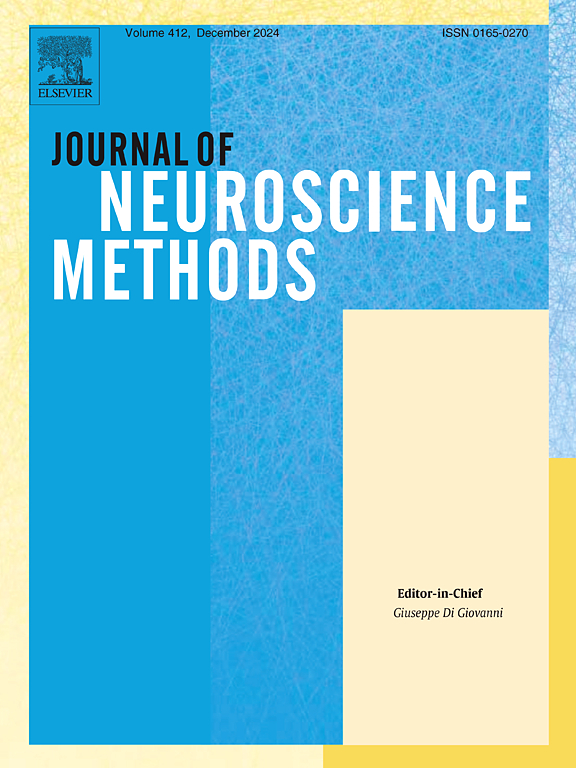Determining the atlas correspondence of Desikan-Killiany-Tourville and Glasser MMP1 atlases across magnetic field strengths
IF 2.3
4区 医学
Q2 BIOCHEMICAL RESEARCH METHODS
引用次数: 0
Abstract
Background
Over sixty-six brain atlases exist to parcellate the brain based on cytoarchitecture, function, and connectivity. Because atlas choice depends on individual study goals and hypotheses, variability in findings contributes to challenges in replication, validation, and reconciling the results across studies. Our goal was to measure the intersection of three commonly used atlases and create a tool to find regional correspondence between the atlases.
New method
This study used three independent samples of anatomical MRI data acquired with different B0 magnetic field strengths: 1.5 Tesla (T), 3 T, and 7 T. The Desikan-Killiany- Tourville (DKT) and Glasser atlases were used to parcellate the brain. Coefficient-of- variation of regional volumes was measured to evaluate regional variability across subjects in each atlas. DKT and Glasser parcellation correspondence was calculated to answer the shared question of what Glasser regions intersect with a DKT region and vice versa and to investigate consistency of the parcellations in relation to each other across a variety of individuals and image resolutions.
Results
We found that regional correspondence was consistent across field strengths for the DKT and Glasser parcellations despite showing population variability in volume, age, and sex, and was validated in the Schaefer400 atlas. Parcellation intersection data along with sample code to calculate specific regional correspondence is available.
Comparison with existing methods
Prior studies have attempted to reconcile multiple atlases, but did not compare voxel- by-voxel on real data.
Conclusion
This analysis created a tool for researchers and can aid in comparisons with differing atlas choice and variable field strengths.
确定desikan - killian - tourville和Glasser MMP1地图集在磁场强度上的对应关系。
背景:基于细胞结构、功能和连通性,存在超过66个脑地图集来对大脑进行包裹。由于图谱的选择取决于个体的研究目标和假设,研究结果的可变性在复制、验证和协调研究结果方面带来了挑战。我们的目标是测量三个常用地图集的交叉点,并创建一个工具来查找地图集之间的区域对应关系。新方法:本研究使用了三个独立的解剖MRI数据样本,分别获得了1.5特斯拉(T)、3T和7T不同的B0磁场强度。Desikan-Killiany- Tourville (DKT)和Glasser地图集被用来包裹大脑。测量区域体积的变异系数以评估每个地图集中受试者的区域变异性。计算了DKT和Glasser分割对应关系,以回答Glasser区域与DKT区域相交的共同问题,反之亦然,并研究了不同个体和图像分辨率之间的分割一致性。结果:我们发现,尽管在体积、年龄和性别上表现出种群变异,但DKT和Glasser地块的区域对应性在场强上是一致的,并在Schaefer400地图集中得到了验证。可提供分段交叉数据以及用于计算特定区域对应关系的示例代码。与现有方法的比较:先前的研究试图协调多个地图集,但没有对真实数据逐体素进行比较。结论:该分析为研究人员创造了一个工具,可以帮助比较不同的图谱选择和可变场强度。
本文章由计算机程序翻译,如有差异,请以英文原文为准。
求助全文
约1分钟内获得全文
求助全文
来源期刊

Journal of Neuroscience Methods
医学-神经科学
CiteScore
7.10
自引率
3.30%
发文量
226
审稿时长
52 days
期刊介绍:
The Journal of Neuroscience Methods publishes papers that describe new methods that are specifically for neuroscience research conducted in invertebrates, vertebrates or in man. Major methodological improvements or important refinements of established neuroscience methods are also considered for publication. The Journal''s Scope includes all aspects of contemporary neuroscience research, including anatomical, behavioural, biochemical, cellular, computational, molecular, invasive and non-invasive imaging, optogenetic, and physiological research investigations.
 求助内容:
求助内容: 应助结果提醒方式:
应助结果提醒方式:


